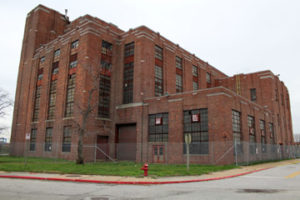
N&W’s Cultural Resources Group completed a Determination of Eligibility for the Western Electric Company Point Breeze Plant Historic District along the Broening Highway in Baltimore, MD. The site is now owned by the Maryland Transit Authority (MDTA). N&W has photodocumented the plant’s buildings and infrastructure, and has researched and written a history of the plant, considering its contributions to the development of telecommunications technology and its role in the development of the City of Baltimore.
The former manufacturing plant is now known as the Point Breeze Industrial Park and contains a number of former Western Electric buildings from the 1930s, 1940s and 1950s. N&W was charged with evaluating all of the former Western Electric buildings as a potential Historic District, paying particular attention to the centrally located former Power House. This massive structure, once the focal point of the plan, is the focal point of this study. Rising above the rest of the complex, the Power House exemplified the eclectic “Brick Cathedral” Style, and was designed to communicate elegance, power and permanence. Now functionally obsolete, the building is in deteriorated condition and presents safety concerns. It is proposed to be demolished as part of MDTA’s development plan for the Point Breeze property.
The remaining former Point Breeze Plant campus took shape as the result of pre-and post-war building campaigns, and presents examples of Art Deco, Beaux Arts, Classical Revival, and International Styles. The plant operated from 1930 to 1984.
N&W has recommended the former Western Electric Point Breeze Plant Historic District for National Register eligibility as an historically significant cultural resource for its association with the history of telephone and communications equipment manufacture, for its significance as a planned manufacturing complex, and for its display of a variety of architectural styles, most notably its Art Deco elements.
N&W’s report is currently under review by the Maryland Historical Trust.
